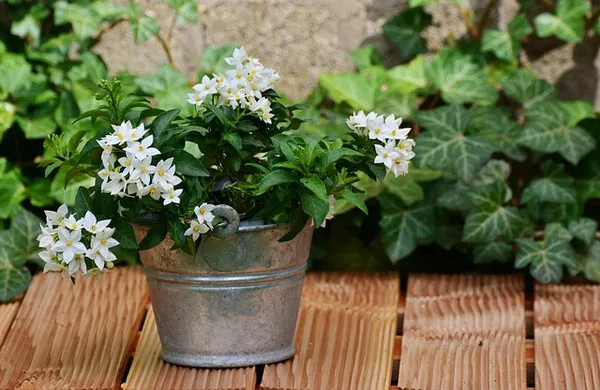Few things can brighten up a space as effortlessly as a fresh bouquet of flowers. Whether they’re a gift, a centerpiece, or simply a way to bring a touch of nature indoors, flowers have a unique ability to add beauty and charm to any environment. However, the vibrancy and freshness of cut flowers can be fleeting. Thankfully, there are simple yet effective ways to prolong their beauty. One of the key factors in maintaining the longevity of cut flowers is the water they are placed in. In this article, we will explore what to put in water to keep flowers fresh, providing you with tips and insights to help you enjoy your blooms for an extended period.
Clean, Fresh Water
The foundation for keeping cut flowers fresh begins with clean, fresh water. When arranging a bouquet, ensure the vase or container is thoroughly cleaned to prevent any bacterial growth or residue that may negatively impact the flowers. Additionally, it is essential to use fresh, cool water. Lukewarm or tepid water can encourage the growth of bacteria and accelerate flower wilting.
Flower Food Packets
Many florists provide small packets of flower food with their bouquets, and for a good reason. These packets typically contain a combination of ingredients that help extend the life of cut flowers. Common components of flower food include:
Sugar: This provides essential energy for the flowers, allowing them to open and bloom more fully.
Citric Acid: Citric acid helps lower the pH of the water, which in turn, assists in water uptake and nutrient absorption.
Bleach or Antimicrobial Agents: These ingredients inhibit bacterial growth in the water, preventing clogged stems and foul odors.
When using flower food packets, follow the instructions provided, as they vary by brand. Typically, one packet is suitable for a standard vase.
Homemade Flower Preservatives
If you don’t have access to commercial flower food packets, you can create a homemade flower preservative. A common recipe includes:
- 2 tablespoons of sugar: Provides nourishment for the flowers.
- 2 tablespoons of white vinegar: Helps to lower the pH level of the water.
- 1/2 teaspoon of bleach: Acts as an antimicrobial agent.
- 1 quart of lukewarm water: Serves as the base for the mixture.
Mix these ingredients together in a clean container and use this solution to fill your vase. The vinegar and bleach help to maintain a bacteria-free environment for your flowers, while the sugar provides energy.
Aspirin or Alka-Seltzer
Another home remedy to keep flowers fresh is the use of aspirin or Alka-Seltzer tablets. Simply drop one tablet into the vase filled with water. Aspirin contains salicylates, which can help to lower the pH of the water and improve water uptake by the stems. However, this method may not be as effective as using a complete flower food packet or homemade preservative.
Change the Water Regularly
Even with the best water additives, water can still become cloudy and develop bacteria over time. To keep your flowers fresh, change the water every two to three days. When doing so, trim the stems by about an inch and make clean diagonal cuts. This allows the flowers to absorb water more efficiently. Rinse the vase thoroughly before refilling it with fresh water and any additional flower food or homemade preservative.
Keep the Vase Clean
In addition to changing the water, it’s crucial to keep the vase or container clean. Bacteria can cling to the sides of the vase, so giving it a gentle scrub with warm, soapy water after each water change can help prevent bacterial growth and keep your flowers fresh longer.
Avoid Direct Sunlight and Heat
While flowers need light to grow, cut flowers are different. They thrive best in indirect sunlight and cooler temperatures. Direct sunlight and excessive heat can cause the water to evaporate quickly and accelerate the wilting process. Keep your vase in a location with diffused light and away from heating vents or radiators.
Trim and Prune
As your flowers age, some may wilt or develop dead leaves. Remove these as soon as you notice them to prevent the spread of bacteria and to encourage the remaining flowers to thrive. Additionally, continue to trim the stems every few days to ensure they can absorb water effectively.
Use Floral Preservatives with DIY Touches
To add a personal touch to your flower preservation routine, you can create decorative floral preservatives. For example, you can add a few drops of essential oils, such as lavender or rose, to your water for a pleasant aroma. This not only keeps your flowers fresh but also enhances the overall ambiance of your space.
Experiment with Floral Enhancers
There are several additional substances you can experiment with to keep your flowers fresh. Some flower enthusiasts swear by adding a pinch of salt or copper coins to the vase. The salt may help reduce bacterial growth, and copper is believed to act as a fungicide. While these methods have anecdotal support, their effectiveness may vary.
Conclusion
Enhancing the lifespan of your cut flowers is a satisfying and cost-effective way to enjoy their natural beauty for an extended period. By providing clean water, appropriate additives, and proper care, you can savor your floral arrangements long after they arrive. Whether you opt for commercial flower food, a homemade preservative, or other creative enhancements, the key is to create a clean and nourishing environment for your blooms. With these tips on what to put in water to keep flowers fresh, you can transform your home or workspace into a haven of floral elegance.


